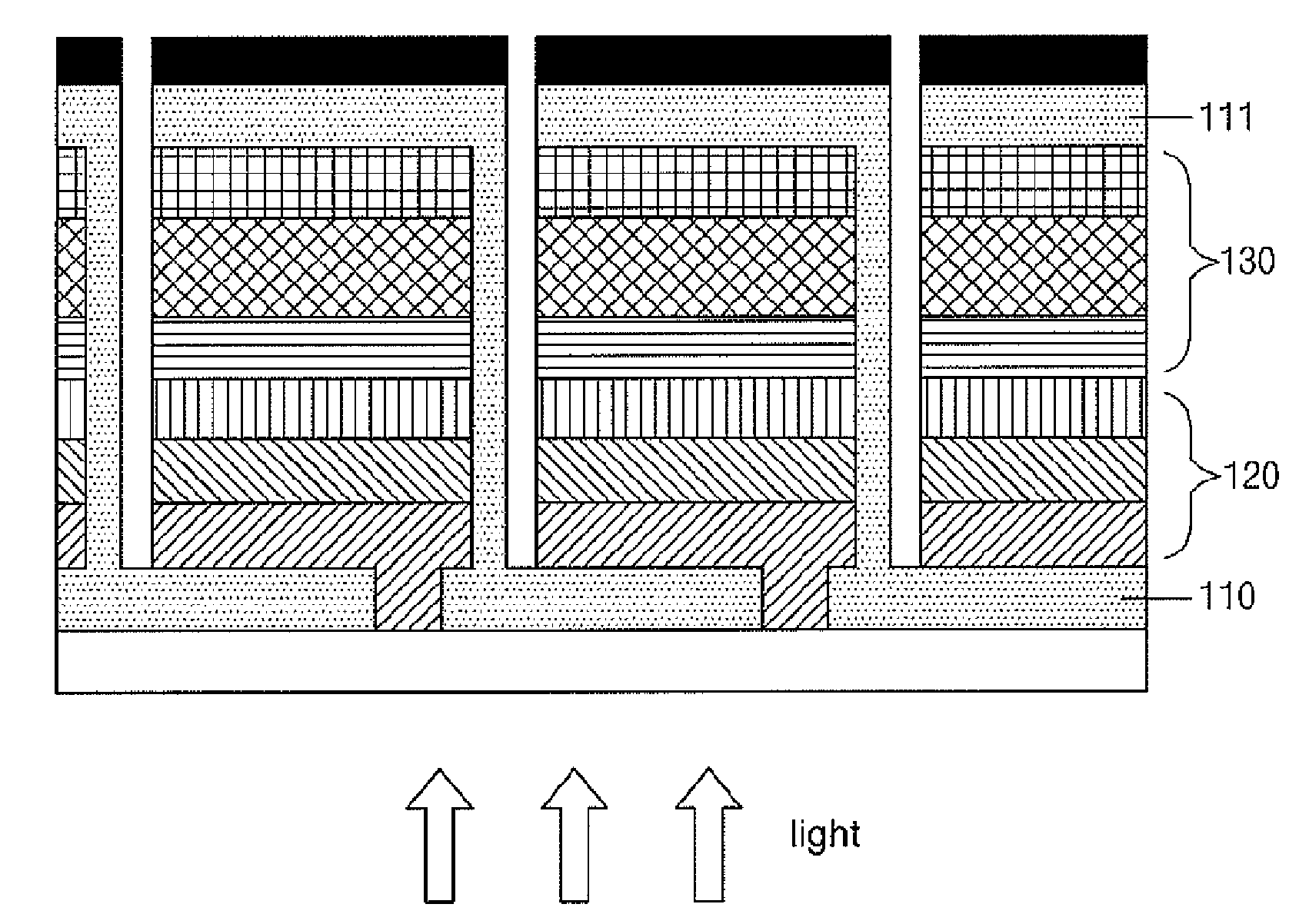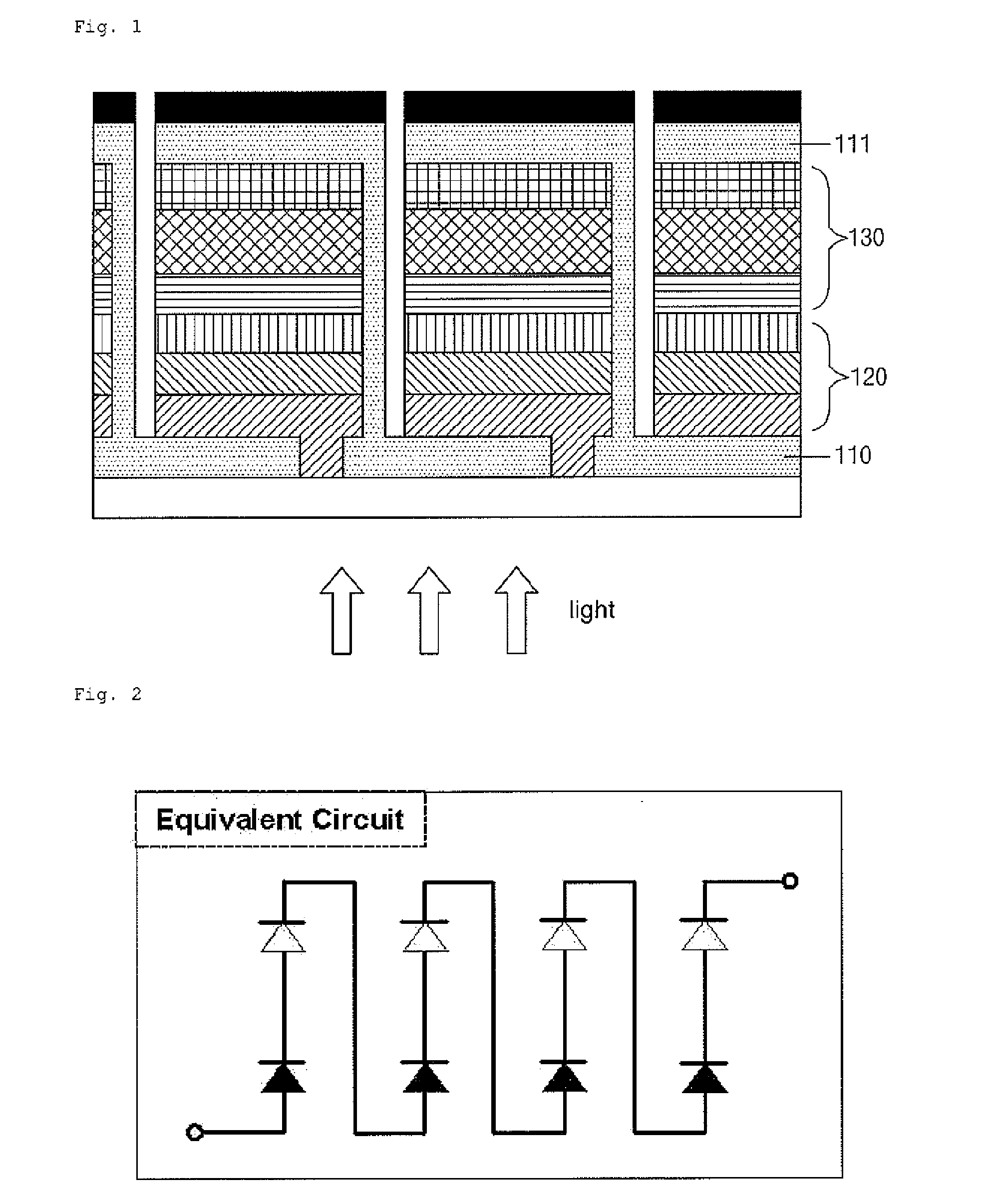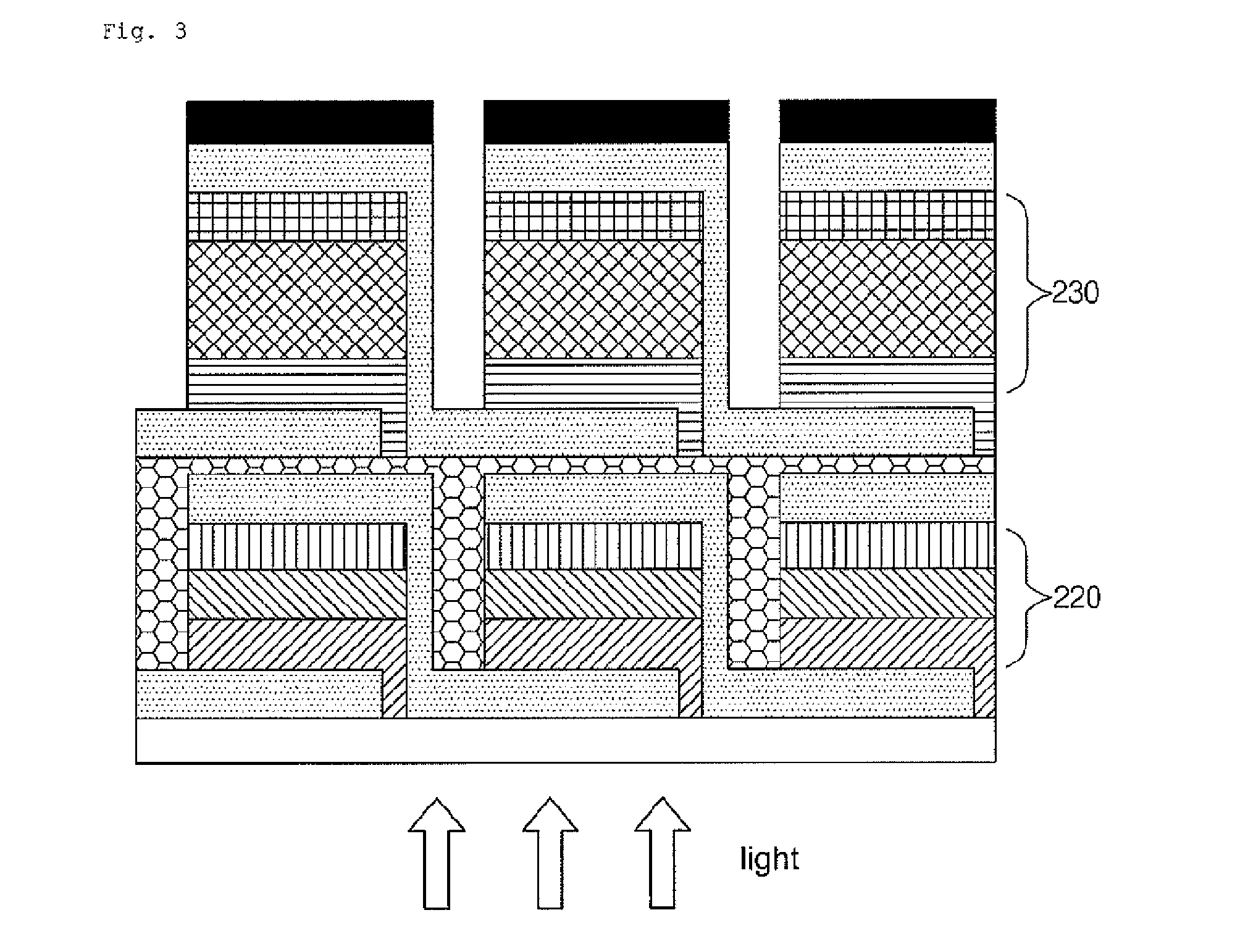Thin-film solar cell and method of manufacturing the same
a solar cell and film technology, applied in the field of integrated thin film solar cell modules, can solve the problems of not being actively utilized, reducing the photoelectric conversion efficiency of the same, and not being exposed to light, so as to improve the photoelectric conversion efficiency, reduce the cost of manufacturing, and improve the effect of photoelectric conversion efficiency
- Summary
- Abstract
- Description
- Claims
- Application Information
AI Technical Summary
Benefits of technology
Problems solved by technology
Method used
Image
Examples
Embodiment Construction
[0057]Embodiments of the present invention will now be described hereafter with reference to the attached drawings. Reference numerals added to construction elements of each drawings use the same numerals within the range of the same construction elements, even though they are indicated in the other drawings, and the detailed description about well-known functions and structures, which are outside the subject matter of the present invention will be omitted.
[0058]FIG. 5 is a sectional view illustrating a stack structure of the thin-film solar cell module according to the preferred embodiment of the present invention and FIG. 6 is a diode equivalent circuit of the thin-film solar cell module according to the preferred embodiment of the present invention.
[0059]In the preferred embodiment of the present invention, the thin-film solar cell is formed by stacking a substrate 300, the first solar cell layer 320, the second solar cell layer 330 and the back-side electrode layer 340; transpar...
PUM
 Login to View More
Login to View More Abstract
Description
Claims
Application Information
 Login to View More
Login to View More - R&D
- Intellectual Property
- Life Sciences
- Materials
- Tech Scout
- Unparalleled Data Quality
- Higher Quality Content
- 60% Fewer Hallucinations
Browse by: Latest US Patents, China's latest patents, Technical Efficacy Thesaurus, Application Domain, Technology Topic, Popular Technical Reports.
© 2025 PatSnap. All rights reserved.Legal|Privacy policy|Modern Slavery Act Transparency Statement|Sitemap|About US| Contact US: help@patsnap.com



